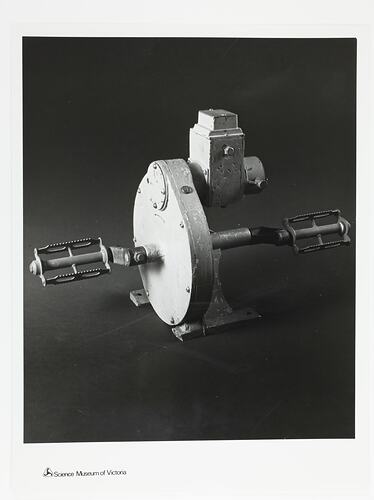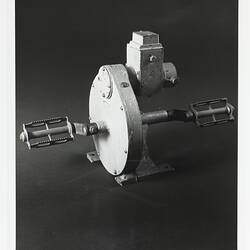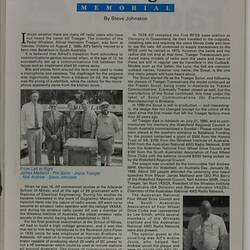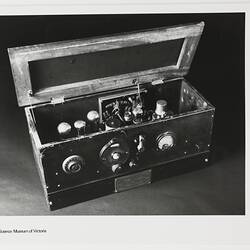Summary
Generator used as part of a pedal-powered radio (or wireless) set, developed by Alfred Hermann Traeger (1895-1980) for the Australian Inland Mission aerial ambulance service (later named Royal Flying Doctor Service).
Alf Treager invented this generator for his portable radio (or wireless) set, first used in Queensland in 1929. and which could easily generate the current required for a short wave radio transmitter, copying the motion of a person riding a bicycle. He had adapted the principle that had been used by German troops in WW1 for transmission of Morse signals. The generator was capable of supplying an electric pressure between 200 - 400 Volts for a pedalled input of 20W, an effort that could be easily achieved by a person.
This set is believed to have been used at Mulka Station in the north of South Australia, on the main Birdsville-Maree route to Adelaide. It was named the 'Mary Margaret Kemp Set' in 1931 after the founding President (from 1925-1930) of the Western Division of the Queensland Country Women's Association (CWA).
Physical Description
Floor mounted with grey metal housing fitted with cycle cranks and pedals.
More Information
-
Collecting Areas
-
Acquisition Information
Donation from Royal Flying Doctor Service of Australia, 13 Feb 1956
-
Inventor
-
Place Used
-
Classification
-
Category
-
Discipline
-
Type of item
-
References
John Behr, 'Traeger, Alfred Hermann (1895-1980)', Australian Dictionary of Biography, National Centre of Biography, Australian National University, [Link 1] published first in hardcopy 1990, accessed online 24 March 2023. [Link 2] Australasian Radio Relay League (1933-12-14). Only Radio Has Made Possible the FLYING DOCTOR One-man-power Wireless Network in Far North Links Oupost and Enables Telegraphic Communication With World (14 December 1933). In The wireless weekly : the hundred per cent Australian radio journal. 22 (24), 24. 1933 'COUNTRY WOMEN'S ASSOCIATION.', The Charleville Times (Brisbane, Qld. : 1896 - 1954), 3 November, p. 2. , viewed 24 Mar 2023, [Link 3]
-
Keywords
Electric Generators, Electric Power Production, Flying Doctors, Radio Transceivers, Innovation, Innovation & Design, Inventions




